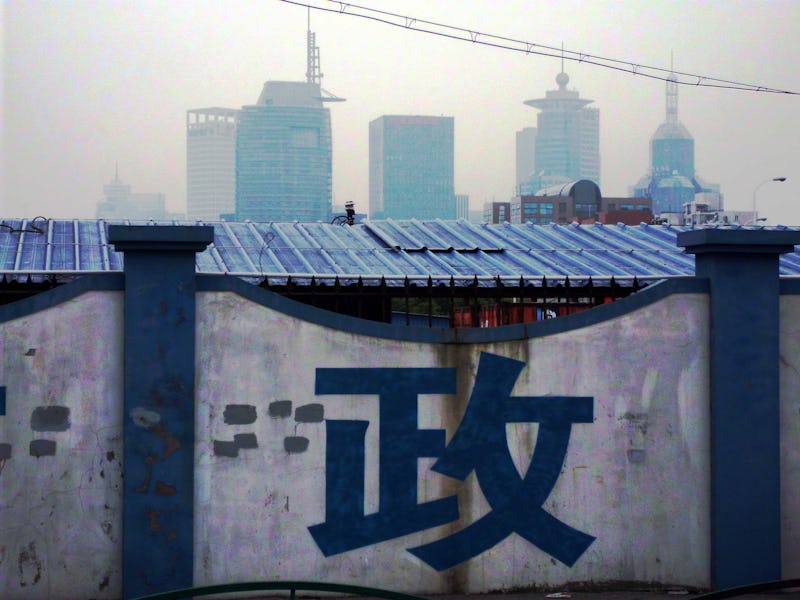Do Solar Panels Work? MIT Puts Dollar Amount on Pollution's Economic Impact
Study finds that dirty solar panels cost Delhi, India $20 million a year.

In Delhi, India, “there’s never a day without pollution,” says Ian Marius Peters. By his calculations, it’s costing local solar energy users at least $20 million annually.
Delhi isn’t alone in this predicament either. Peters, a researcher at MIT, was a member of a research group that compared data from 17 cities in an effort to assess how air pollution undermines the effectiveness of the solar panel, a technology long beleaguered by critics for not quite living up the promise of renewable energy. Do solar panels work in smoggy weather? Do solar panels stay clean enough in polluted air to capture the sun’s energy? The big question, though: How much money is air pollution sucking from the solar industry because the products aren’t delivering on their promise?
The short answer? The haze in smoggy cities is bad enough to drive some solar firms out of business.
The results of their investigation appeared earlier this August in the journal Energy & Environmental Science. To do their research,
“If their systems are not performing as predicted, it’s definitely going to be not pleasant and it might add to skepticism about installing solar systems in cities,” Peters tells Inverse. “I hope the study shows that if you are installing solar panels in cities that have a known issue with air pollution, you need to account for this when you do your system planning. If you do this correctly, then you will be able to make your predictions correctly and your financial assessments correctly.”
Obviously, as a matter of public health and policy, governments and industry ought to be dealing with this air pollution already, but as Peters told MIT News their study “hopefully is another small piece of showing that we really should improve air quality in cities, and showing that it really matters.”
Using sensors, the team collected data on airborne particulate matter that could scatter, absorb, or reflect light, focusing on fine particulates less than 2.5 millimeters in diameter.
This material, mainly compounds like sulfates, nitrates, ammonia, carbon and lead, mostly comes from man-made sources like auto emissions, dust and cooking — although where it goes is no less important. Air pollution this size is small enough to enter not just the lungs, but the bloodstream as well. According to the UN’s World Health Organization, air pollution causes about 6.5 million premature deaths each year.
While less gruesome, the economic impact on solar energy collection was no less stark, according to the study. For the capital city of Kolkata, in the Indian state of West Bengal, Peters and his group estimated a loss of approximately $16 million annually in solar energy returns. The cities of Beijing and Shanghai have each been losing about $10 million annually by their calculations.
The team also projected that proposed solar projects in Los Angeles — despite long efforts to deal with its historic smog problem — could still likely to cost the city’s solar energy users somewhere between $6 million and $9 million each year.
A street scene in Delhi, India.
To put these numbers in context, it might help to think in terms of percentages. Air pollution in Dehli, the researchers say, is filtering out about 12 percent of the light that could otherwise be converted into solar energy. In Los Angeles, that number is about 2 percent; in Shanghai it’s about 8 or 9 percent.
Compare these to the profit margins for most solar firms, frequently someone in the 17 to 20 percent range for the multimillion-dollar firms, and considerably less for the smaller firms, and the reality looks pretty clear: dirty air can really choke small-time solar business before they get a chance to grow.
“One thing that I hope will happen from this study is that more business with install these kinds of sensors that will make this kind of data available,” Peters says. “[The sensors] allows us to make more accurate predictions about the output of solar panels.”
Study Abstract
Urban haze is a multifaceted threat. Foremost a major health hazard, it also affects the passage of light through the lower atmosphere. In this paper, we present a study addressing the impact of haze on the performance of photovoltaic installations in cities. Using long-term, high resolution field data from Delhi and Singapore we derive an empirical relation between reduction in insolation and fine particulate matter (PM2.5) concentration. This approach enables a straightforward way to estimate air pollution related losses to photovoltaic power generation anywhere on the planet. For Delhi, we find that insolation received by silicon PV panels was reduced by 11.5% ± 1.5% or 200 kWh m−2 per year between 2016 and 2017 due to air pollution. We extended this analysis to 16 more cities around the planet and estimated insolation reductions ranging from 2.0% (Singapore) to 9.1% (Beijing). Using spectrum data from Singapore, we projected how other photovoltaic technologies would be affected and found an additional reduction compared to silicon of between 23% relative for GaAs and 42% for a 1.64 eV perovskite material. Considering current installation targets and local prices for electricity, we project that annual losses in revenue from photovoltaic installations could exceed 20 million USD for Delhi alone, indicating that annual economic damage from air pollution to photovoltaic site operators and investors worldwide could be billions of dollars.